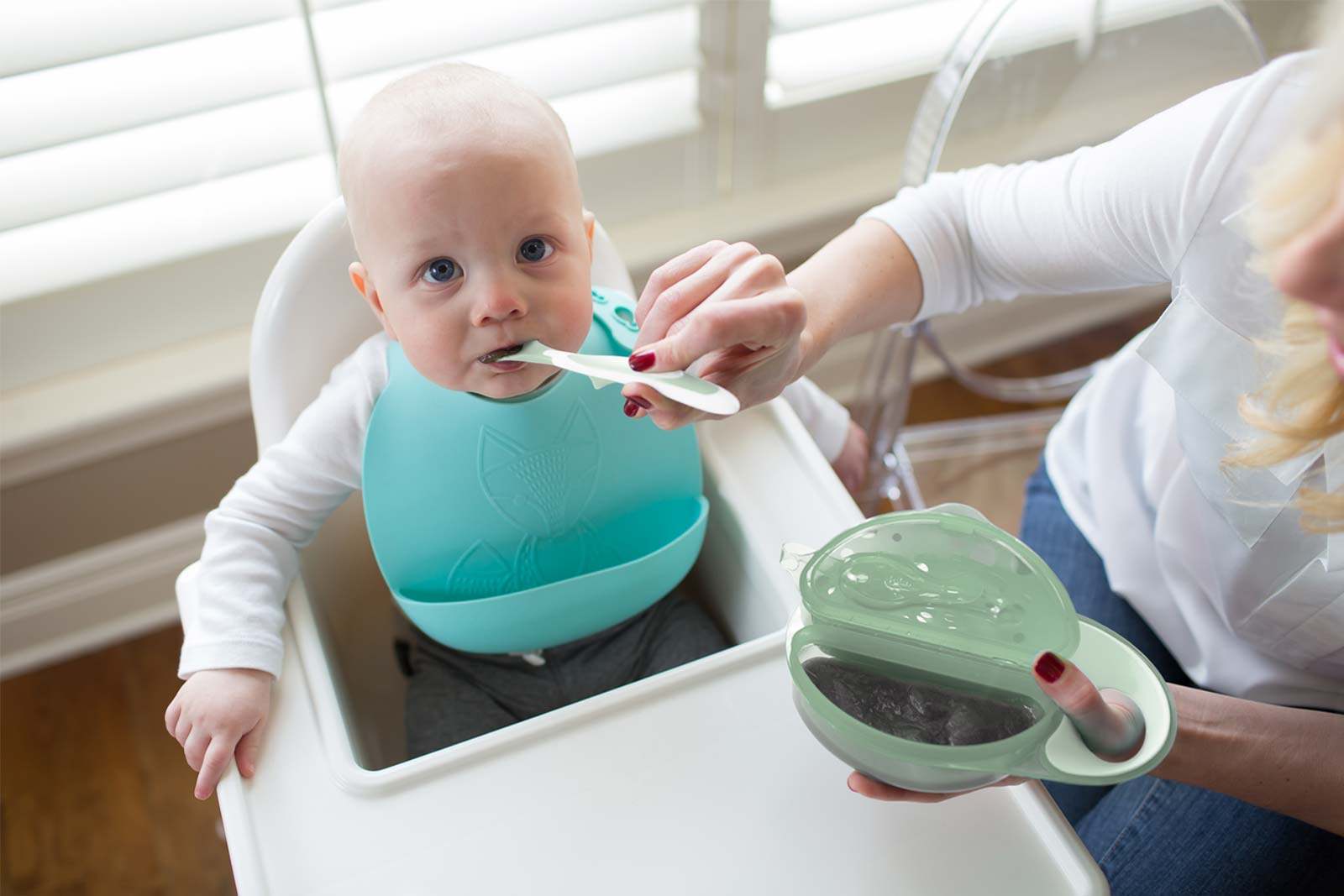Veggies or Fruits: Which Come First?
Congratulations on embarking on the exciting journey of transitioning your little one from formula or breast milk to solid foods! As you explore this new phase of your child's development, you may be wondering what foods are best for your baby's first real eating experience and in what order to introduce them. You'll find many contrasting opinions regarding the veggies, fruits, grains and meats that are essential to your growing child's diet. While each of these food groups is important for development and growth, deciding what is best to feed your baby first is a source of much debate.
First things first. It's important to consult with your pediatrician to be sure your child is ready to take on solid foods. Typically this will be at five to six months of age. Iron-fortified cereals like rice, barley and oats are a natural starting point, but what food group comes next? Here's where things gets a little murky. When my wife and I were going through this growth experience with our baby daughter, our pediatrician suggested experimenting to see what foods peaked our child's eating interest. The problem was, she liked some foods much more than others she seemed to only want pears and other fruits, for instance and we worried that she was missing out on important vitamins and nutrition.
Surprisingly, this is a common challenge, and there are differing schools of thought. According to many pediatricians, the trick is to introduce baby to the blander foods, such as vegetables and grains first. After baby develops a taste for these, fruits and other naturally flavorful foods should come shortly after. This way you help to avoid a "fruits first = veggies never" reaction in your child. However, the American Academy of Pediatrics recently published findings that indicate while babies are born with a preference for sweets, the order of introducing foods does not change this.
So, what is the best solution? There is no "one-size-fits-all" scenario when it comes to your baby. Each child is different, and their nutrition should reflect that. The best thing to do is work closely with your pediatrician and pay attention to your child's eating habits. This will help you develop a solid nutrition plan that is as unique as your child.
As your little one moves into the toddler stage, it's important to continue offering a variety of healthy foods to support a balanced diet. Encourage them to try new things by fostering their independence. Let them pick out fruits and veggies at the grocery store or involve them in the preparation process by letting them wash the produce. It may take several attempts before a new food is accepted, so be patient and persistent. I mean, who would have guessed that our daughter is now a huge veggie fan? Bon appetit!
First things first. It's important to consult with your pediatrician to be sure your child is ready to take on solid foods. Typically this will be at five to six months of age. Iron-fortified cereals like rice, barley and oats are a natural starting point, but what food group comes next? Here's where things gets a little murky. When my wife and I were going through this growth experience with our baby daughter, our pediatrician suggested experimenting to see what foods peaked our child's eating interest. The problem was, she liked some foods much more than others she seemed to only want pears and other fruits, for instance and we worried that she was missing out on important vitamins and nutrition.
Surprisingly, this is a common challenge, and there are differing schools of thought. According to many pediatricians, the trick is to introduce baby to the blander foods, such as vegetables and grains first. After baby develops a taste for these, fruits and other naturally flavorful foods should come shortly after. This way you help to avoid a "fruits first = veggies never" reaction in your child. However, the American Academy of Pediatrics recently published findings that indicate while babies are born with a preference for sweets, the order of introducing foods does not change this.
So, what is the best solution? There is no "one-size-fits-all" scenario when it comes to your baby. Each child is different, and their nutrition should reflect that. The best thing to do is work closely with your pediatrician and pay attention to your child's eating habits. This will help you develop a solid nutrition plan that is as unique as your child.
As your little one moves into the toddler stage, it's important to continue offering a variety of healthy foods to support a balanced diet. Encourage them to try new things by fostering their independence. Let them pick out fruits and veggies at the grocery store or involve them in the preparation process by letting them wash the produce. It may take several attempts before a new food is accepted, so be patient and persistent. I mean, who would have guessed that our daughter is now a huge veggie fan? Bon appetit!


